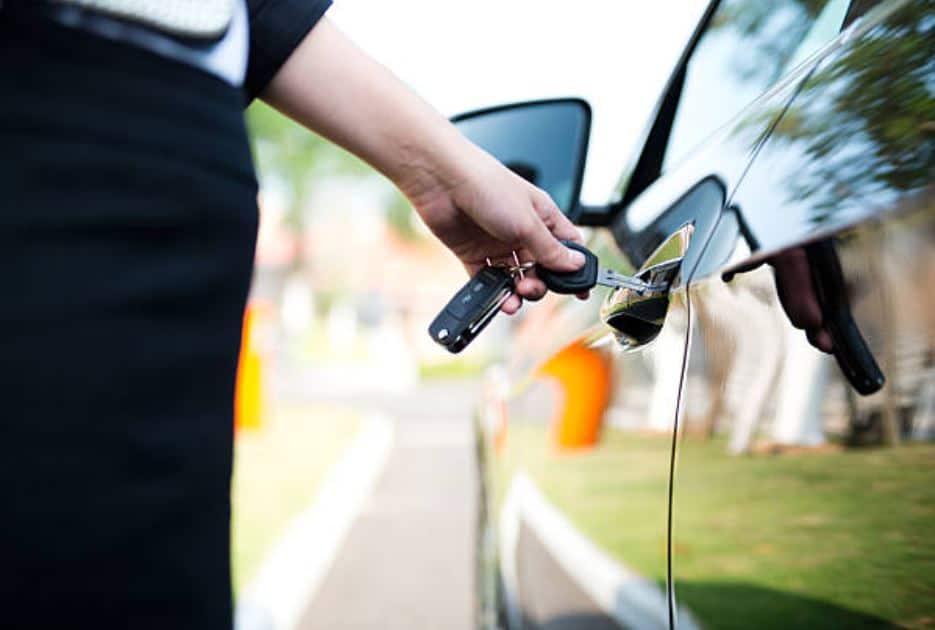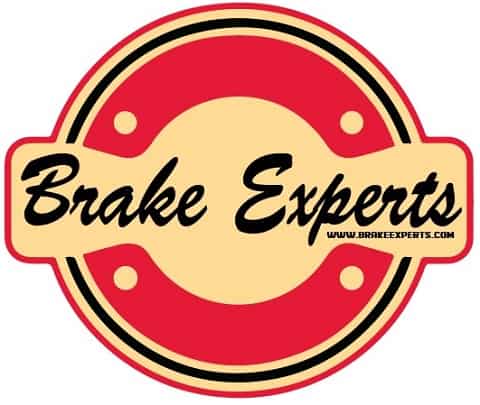Owners of older cars that are still largely opened using the key often need help unlocking the vehicle. Quick maintenance may address some reasons, but you’ll need to replace other components to address others. We’ll go through every potential cause of the vehicle door not opening in this tutorial, along with the simplest and most affordable solutions.
Lack of lubrication, freezing, worn or dirty lock cylinders and tumblers, or a damaged tailpiece (turn piece) of the lock are the most frequent causes of jammed car doors.

Causes Why The Door Will Not Unlock
1. Insufficient Lubrication
It’s important to remember that the door lock is a sensitive device with several moving components that are also outside. Locks don’t need much lubrication, if any, but dirt and tiny corrosion might eventually cause the machine to malfunction.
You may use WD-40 to remove moisture and clean the lock, but I suggest using all-purpose lubricating oil.
Holding your key flat while pouring the oil into the groove is the best method to apply it. Please put it in the lock, take it out, turn it 180 degrees, and do it again. Spread the oil with the help of the key, and add a little more if necessary to lubricate the lock’s other side. Avoid using too much oil since it may soon clog the lock by collecting dirt.
2. Frozen Lock
Teaching pupils how to maintain and care for vehicles properly is one thing that is almost all driving schools throughout the globe neglect to do. Winter tires are not the only equipment you’ll want when the cold weather arrives. There are a few methods to defrost a frozen lock since the cold may cause it to freeze and prevent you from opening the door.
Although lock de-icers are a common remedy, a simple pocket lighter will work if you don’t have one.
Use the lighter to warm the key before immediately inserting it into the lock. Until the lock opens, go through the procedure many times. To avoid melting the plastic or transferring a lot of heat to the base, keep the flame close to the tip of the key. Additionally, there’s no need for the key to getting very hot; if it’s too hot to handle, the lock will heat up just fine without it.
Using glycerine is the most effective approach to prevent the lock from freezing over. Like lubricating oil, you would distribute some through the lock after applying some on the key. Interestingly, pure glycerine freezes at around 56 degrees Fahrenheit and hardens when it mixes with water. To get the greatest results, combine two-thirds glycerine and one-third distilled water; however, since glycerin is denser than water, use a kitchen scale and measure in grams.
Rubber door seals may freeze together and become rigid due to the cold. If you open the door, you risk ripping one of the seals off or causing it to shatter. Dabbing glycerin on a cloth and wiping it over the seals is an easy fix. I’ve used this approach for years and haven’t had any issues since.
3. Lock Tail Piece Broken
Since I’m not a locksmith, I don’t understand the inside workings of a vehicle door lock. However, I know that worn lock tumblers may make the lock unable to rotate or enable you to open the door with almost any tool, including a screwdriver. The broken tailpiece is most likely to blame if the lock turns but the door won’t unlock.
A lever at the rear of the lock is mechanically moved when you turn the key. The lock will release the latch between the door and the B-column via push-pull connections. The door won’t unlock if one of the parts leading to the door latch malfunctions, and you may find that turning the key is now simpler than it used to be.
Since removing the door panel is required, fixing the tailpiece should be left to a locksmith. One of the most challenging chores, particularly with the speakers and window controls installed on the door. I’ve probably had a dozen door-related failures—handle, lock, tailpiece—and delegated the bulk to a professional.
4. Damaged Tumblers & Broken Lock Cylinder
The key won’t spin if the lock cylinder or tumblers are damaged since the malfunction will prevent all the tumblers from aligning. To get the lock fixed, you must overcome the following three obstacles:
- Gain access to the car.
- Take out the damaged lock.
- Remake and reinstall the lock.
Since you have the key, taking the initial step shouldn’t be challenging; you may use the fob to unlock the doors, unlock the lock on the passenger side, or open the trunk to enter the car. I recommend reading this page since it outlines all the other methods for entering your car if you cannot do so via the usual methods.
You can physically open the door once you’re in the driver’s seat, but more significantly, you can drive the vehicle to a nearby locksmith. Because they can use your current key as a model to make the new lock, you won’t need to alter the locks. Alternatively, remove the lock by yourself using the instructions on this page. It’s a difficult task, and you’ll still need to make a new lock or buy a new one and receive new keys.
5. Worn Key
Years or decades of repeatedly inserting and removing the key from the lock will ultimately wear it out and render it useless. The tumblers won’t line up due to wear, and the lock won’t turn. The worst-case scenario involves snapping within the lock, which may also flex.
Some locksmiths will make duplicates from worn keys, but it will cost more than a copy of a key in excellent shape. You may take your key to a locksmith and have a copy made if it is not already worn. While there, copy the RFID chip and even the fob, as copying is significantly less expensive than starting from scratch with programming. The article “How To Start My Car Without a Chip Key FOB?” has further information.
FAQs
How do you open a lock that won’t budge?
Most people advise lubricating the lock with silicone, but I choose multi-purpose lubricating oil since it’s less expensive and just as effective. Pour oil over the key while holding it flat, then put it into the lock. If you use effort and patience, you should be able to turn the lock.
Why won’t my key open the door of my car?
Although we’ve explained why the physical key may not function, alternative ways exist for you to access the door. The passenger-side door may be unlocked using the key, the fob remote, or even a mobile application.
Summary
Follow these instructions to determine and resolve the problem if your car door won’t unlock. Maintaining door locks requires adding lubricating oil, drying the key before inserting it, and being cautious while turning it.

